
Laundry day is a never-ending battle, and when it comes to drying our clothes, we’re often left scratching our heads. What’s the best heat setting for our dryer? Do we go full blast with high heat or take it easy to keep our clothes in top shape? In this blog post, I’ll break it down for you and give you all the info you need to choose the perfect heat setting for your dryer.
When it comes to fabrics, one thing matters most: heat tolerance. Delicate silk, lace, or wool need a gentle touch with lower temperatures, while rugged denim or cotton can handle some serious heat without breaking a sweat. Knowing your fabrics and their needs will help you make an informed decision.
Time is of the essence when doing laundry. High heat means fast drying, perfect for those times when you’re in a rush. But beware. Some fabrics need more time at lower temperatures to avoid shrinking or damage. Balancing drying time and temperature is key to keeping your clothes looking fresh.
We all want to be eco-friendly these days, right? Well, choosing the right heat setting can actually save energy. Lower temperatures mean less electricity used, which not only helps Mother Earth but also keeps your utility bills in check. So let’s be green while still getting those clothes dry.
Safety first. High heat can be dangerous if not handled properly. Fire hazards and fabric damage are real risks if you crank up the temperature too much. Stick to the manufacturer’s guidelines and use common sense when setting your dryer’s temperature. Safety should always be priority number one.
To sum it up, finding the best heat setting for your dryer boils down to considering fabric type, drying time, energy efficiency, and safety. By understanding what each fabric needs and balancing that with your time constraints and environmental concerns, you’ll achieve optimal drying results while keeping your clothes in tip-top shape. In the following sections, we’ll dig deeper into each of these factors to help you become a dryer heat-setting pro.
What heat setting is best for dryer
Contents
- 1 What heat setting is best for dryer
- 1.1 High Heat: The Fast and Furious Option
- 1.2 Low Heat: Gentle Care for Delicate Fabrics
- 1.3 Air Fluff/No Heat: Refresh and Revive Without Heat Ideal for already dry clothes or items that can’t tolerate heat Helps remove wrinkles without subjecting fabric to high temperatures Great for reducing static electricity in clothes Tips for Optimal Drying Results:
- 2 Understanding the Different Heat Settings on a Dryer
- 3 High Heat: Ideal for Bulky Items
- 4 Medium Heat: Suitable for Everyday Clothing
- 5 Low Heat: Recommended for Delicate Fabrics
- 6 Air Fluff or No Heat: Refreshing Clothes Without Heat
- 7 Selecting the Appropriate Heat Setting Based on Fabric Type
- 8 Timing the Drying Process to Avoid Over-drying
- 9 Additional Features of Dryers That Can Help Save Energy
- 10 Conclusion
Drying clothes in a dryer is a convenient and efficient way to get them ready for wear. However, using the wrong heat setting can lead to damage or shrinkage. In this article, we will explore the different heat settings available on dryers and provide tips for choosing the best one for your clothes.
High Heat: The Fast and Furious Option
- Ideal for sturdy fabrics like cotton or denim
- Removes moisture quickly and efficiently
- Be cautious with delicate items or those prone to shrinking
Medium Heat: The Safe Bet for Everyday Garments
- Suitable for synthetic materials, blends, and delicate fabrics
- Provides enough warmth without risking damage
- Minimizes the risk of shrinkage or color fading
Low Heat: Gentle Care for Delicate Fabrics
- Perfect for silk, wool, lingerie, and other sensitive materials
- Helps prevent shrinkage, stretching, or other damage
- Longer drying time but preserves clothing quality
Air Fluff/No Heat: Refresh and Revive Without Heat
- Ideal for already dry clothes or items that can’t tolerate heat
- Helps remove wrinkles without subjecting fabric to high temperatures
- Great for reducing static electricity in clothes
Tips for Optimal Drying Results:
- Read garment care labels to determine suitable heat settings.
- Experiment with different heat settings to find what works best for your clothes.
- Remove clothes promptly once they are dry to prevent over-drying.
- Sort clothes by fabric type to avoid damage caused by high heat.
Understanding the Different Heat Settings on a Dryer
When it comes to drying our clothes, understanding the different heat settings on a dryer is essential for achieving optimal results. Each heat setting serves a specific purpose and is suitable for different types of fabrics and laundry items. Let’s explore each setting in detail:
High Heat Setting:
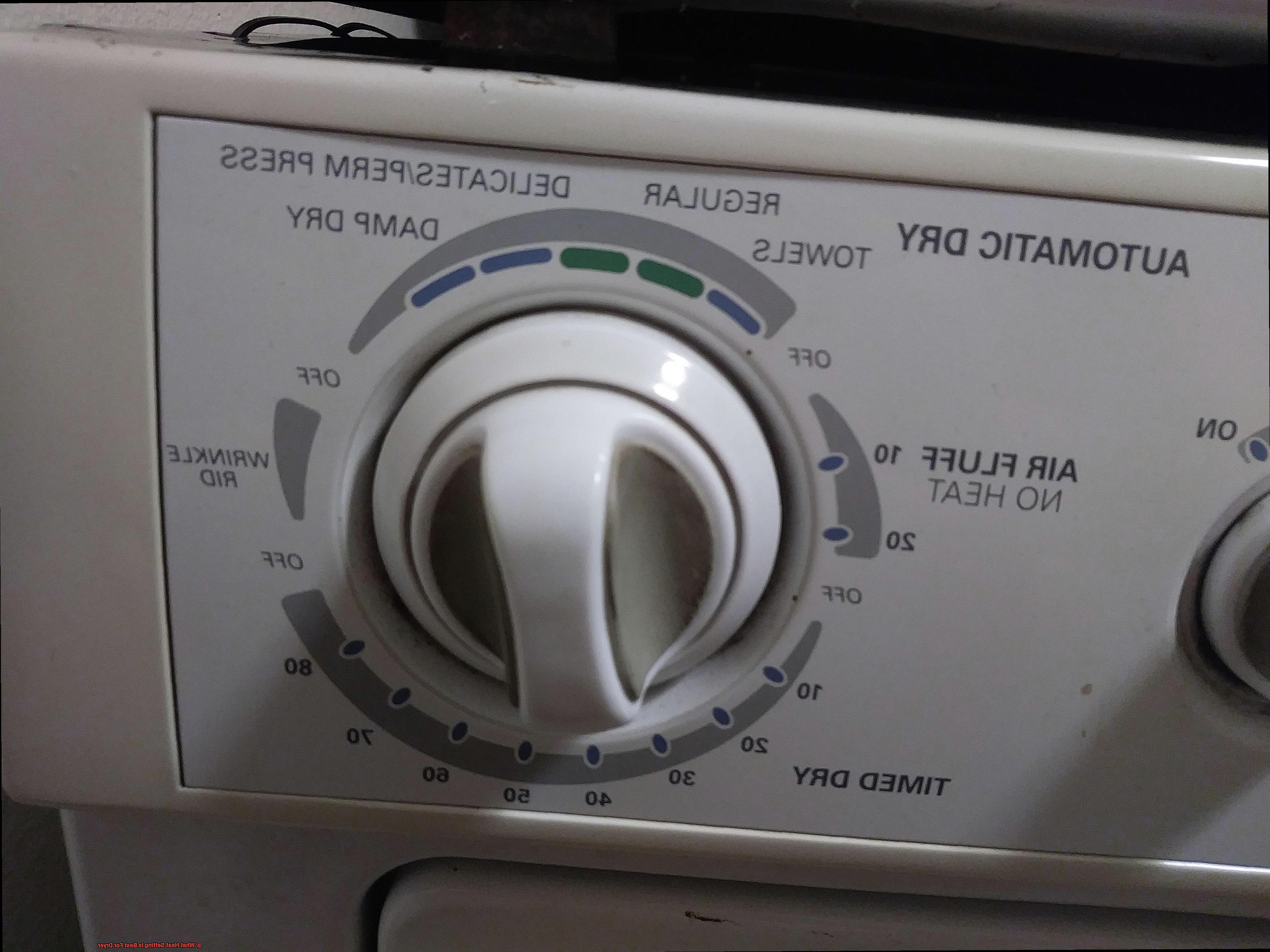
The high heat setting is the hottest option on the dryer and is best for items that can withstand high temperatures, such as towels and cotton clothing. It effectively removes stubborn stains and dries heavy fabrics quickly. However, it is important to avoid using the high heat setting for delicate or synthetic fabrics, as it can cause shrinkage or damage.
Medium Heat Setting:
Slightly cooler than the high heat setting, the medium heat setting is suitable for most fabrics, including synthetic materials and delicate items like lingerie or lace. It provides a balance between drying time and protecting the quality of the fabric.
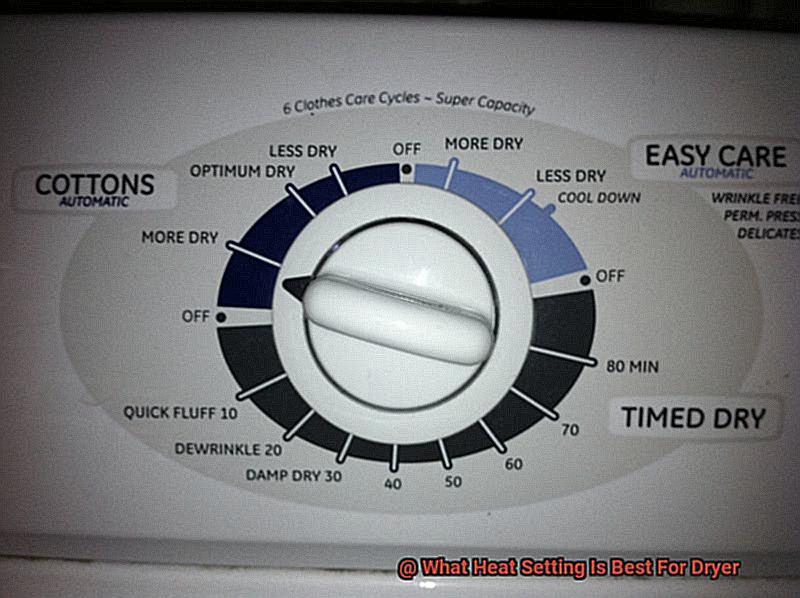
Low Heat Setting:
The low heat setting is the coolest option on the dryer and is ideal for delicate fabrics, such as silk or wool. It helps prevent shrinkage or damage to sensitive materials while still effectively drying them.
Air Fluff Setting:
The air fluff setting does not use heat but instead circulates cool air to freshen up or fluff items without drying them. This setting is useful for removing wrinkles from clothes or refreshing pillows and stuffed animals.
To help you understand these settings better, here’s a handy table summarizing their characteristics:
Setting | Temperature Range | Suitable Fabrics/Items
———————————————————–
High Heat | 135°F – 155°F | Towels, cotton clothing
Medium Heat | 120°F – 135°F | Synthetic materials, delicate items
Low Heat | 95°F – 120°F | Silk, wool, delicate fabrics
Air Fluff | No heat | Refreshing pillows, removing wrinkles
High Heat: Ideal for Bulky Items
When it comes to drying bulky items like comforters, pillows, and heavy blankets, the high heat setting on your dryer is your best friend. As an expert in the field, I can confidently say that using high heat can make all the difference in getting these items dry quickly and effectively. Let’s dive into why this setting is ideal for those big, fluffy pieces.
- Speeds up drying time: Bulky items tend to retain more moisture and take longer to dry than smaller items. By using the high heat setting, you can significantly reduce drying time and get back to enjoying your freshly washed bedding sooner.
- Penetrates thick layers of fabric: Comforters, pillows, and heavy blankets are made up of multiple layers of fabric. The high heat setting helps to penetrate through these thick layers, ensuring that every part of the item is thoroughly dried.
- Prevents mustiness and odors: When bulky items are left damp for too long, they can develop a musty odor. Using high heat helps prevent this by thoroughly drying the items and eliminating any lingering moisture that could lead to unpleasant smells.
- Check care labels: Before using the high heat setting, always check the care label on your bulky item. Some delicate fabrics may not be able to withstand high heat and could be damaged. It’s better to be safe than sorry, so opt for a lower heat setting or air-drying if in doubt.
- Avoid overdrying: While high heat is great for bulky items, it’s important not to overdo it. Overdrying can lead to shrinkage or damage to delicate fabrics. Make sure to periodically check on the progress of drying and adjust the time accordingly.
To illustrate the differences between these bulky items, let’s compare their drying times:
| Item | Drying Time (High Heat) |
|—————–|————————|
| Comforter | 1-2 hours |
| Pillow | 30 minutes – 1 hour |
| Heavy Blanket | 1-2 hours |
Remember, these are just approximate times and can vary based on the size and thickness of the items. It’s always a good idea to check on the progress and adjust as needed.
In conclusion, the high heat setting on your dryer is a game-changer when it comes to drying bulky items. It speeds up drying time, penetrates thick layers of fabric, prevents mustiness and odors, and ensures your items are thoroughly dry. Just remember to check care labels, avoid overdrying, and you’ll have your bulky items ready to snuggle up with in no time. Happy drying.
Medium Heat: Suitable for Everyday Clothing
When it comes to drying everyday clothing in the dryer, finding the right heat setting is crucial. You don’t want your favorite t-shirt to shrink or your go-to pair of jeans to fade, do you? That’s why medium heat is your best friend in this laundry battle. Let’s explore why this setting is the most suitable option for everyday clothing.
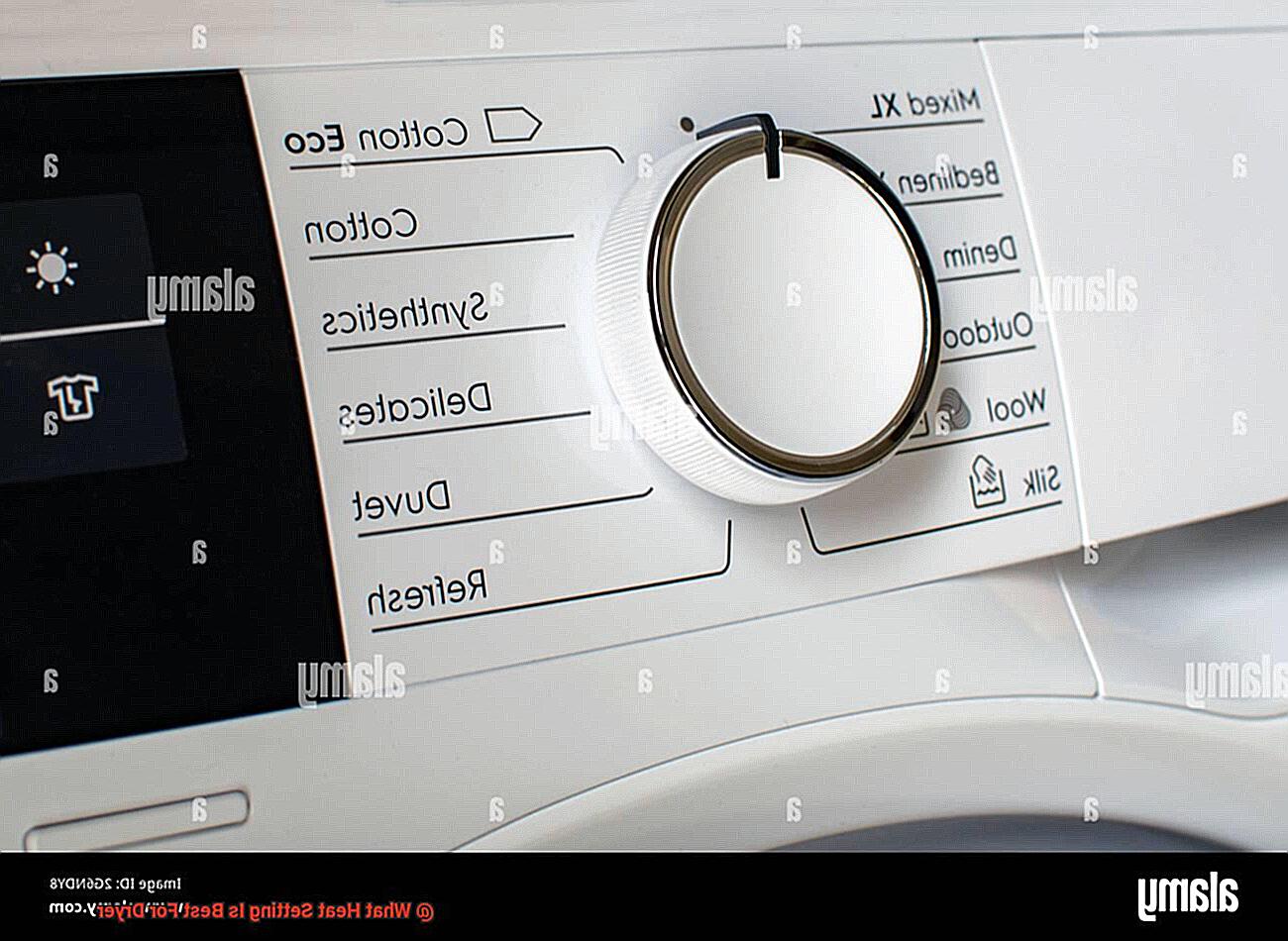
Effective Drying Without Damage
Medium heat provides enough warmth to efficiently dry your clothes without causing excessive heat damage. This setting strikes a balance between speed and safety, ensuring that your garments are dried thoroughly without compromising their quality.
Ideal for Most Fabrics
From cotton and linen to polyester and blends, medium heat is ideal for a wide range of fabrics commonly found in everyday clothing. It helps prevent shrinking, color fading, and fabric weakening, keeping your clothes in great condition for longer.
Safe for Delicate Items
Worried about delicate items like lingerie, knitwear, or synthetic materials? Fear not. Medium heat is safe for these delicate fabrics, allowing them to dry gently without the risk of damage. Just remember to check the care labels of each garment to ensure that medium heat is suitable.
Balanced Drying Process
Unlike high heat settings that can be too intense and lead to permanent damage, medium heat offers a gentle drying process that maintains the quality and integrity of the fabrics. It’s like a warm hug for your clothes.
To help you visualize the benefits of medium heat, here’s a comparison table of approximate drying times using different heat settings:
| Heat Setting | Drying Time (Approx.) |
|————–|———————-|
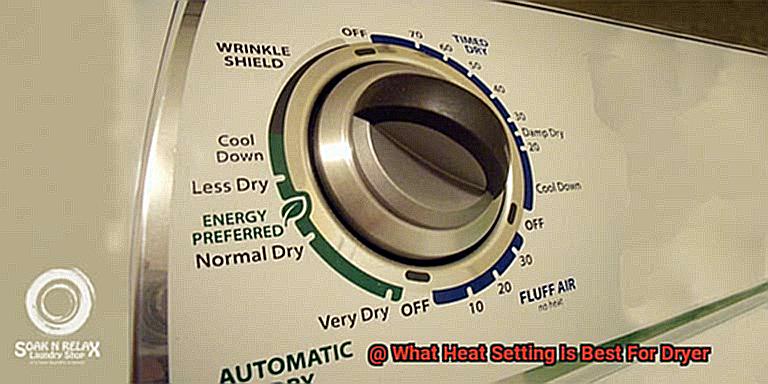
| High Heat | 30-45 minutes |
| Medium Heat | 45-60 minutes |
| Low Heat | 60-75 minutes |
Remember, these times may vary depending on the size and thickness of your garments. Keep a close eye on the drying progress and adjust accordingly.
Low Heat: Recommended for Delicate Fabrics
When it comes to drying delicate fabrics, low heat is the way to go. Delicate fabrics, such as silk, lace, chiffon, and satin, require extra care to ensure they maintain their shape, color, and overall quality. High heat can be detrimental to these materials, causing shrinkage, fading, and distortion. That’s why it’s essential to use the recommended low heat setting on your dryer.
Here are some reasons why low heat is the best option for drying delicate fabrics:
- Gentle Drying: Low heat allows delicate fabrics to dry slowly and gently. This helps prevent any damage that could occur from the harsh heat of high temperatures. By drying your delicate items on low heat, you’re giving them the TLC they deserve.
- Read the Care Label: The care label on each garment provides valuable information about the recommended heat setting. Take a moment to read it before tossing your delicate fabrics into the dryer. Some fabrics may require air drying or a no-heat setting instead of low heat.
- Wrinkle Prevention: Low heat not only protects delicate fabrics but also helps prevent wrinkles. The gentle drying process minimizes the need for ironing, saving you time and effort in your laundry routine.
- Mesh Laundry Bag or Pillowcase: To provide an extra layer of protection during drying, place your delicate fabrics in a mesh laundry bag or pillowcase. This will prevent them from getting tangled or snagged on other items in the dryer.
- Remove Slightly Damp: It’s advisable to remove delicate fabrics from the dryer while they are still slightly damp. Over-drying can lead to brittleness and damage over time. By taking them out when they’re just a bit damp, you can finish air drying them or hang them up to complete the process.
- Alternative Drying Methods: If you have a particularly sensitive garment, it may be best to skip the dryer altogether. Hang it up or lay it flat to dry naturally. This will ensure the fabric stays in pristine condition without any risk of damage.
Air Fluff or No Heat: Refreshing Clothes Without Heat
When it comes to refreshing your clothes, the air fluff or no heat setting on your dryer can be a game-changer. This option uses only cool air to circulate through the dryer drum, gently removing wrinkles and odors from your garments without subjecting them to high temperatures. Let’s take a closer look at the benefits of using this setting and some tips for using it effectively.
Benefits of Air Fluff:
- Gentle on Delicate Fabrics: The air fluff setting is perfect for fabrics that are easily damaged by heat, such as silk, lace, and certain synthetic materials. By using cool air instead of heat, you can refresh these delicate garments without worrying about shrinkage or damage to the fabric fibers.
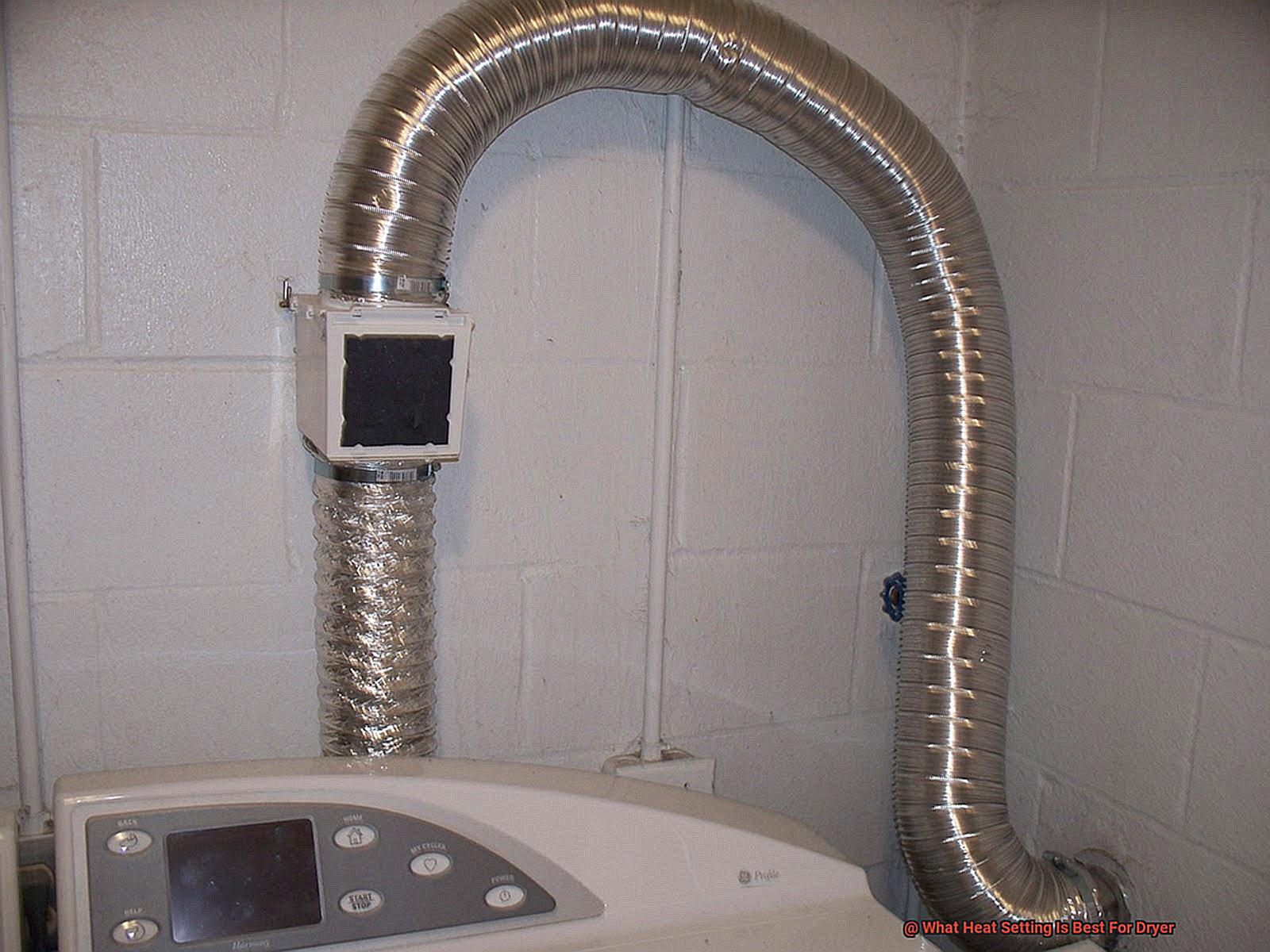
- Great for Already Worn Clothes: Have you ever worn a sweater or outerwear item for just a short time and don’t want to go through the hassle of washing it? Air fluff is your answer. This setting is ideal for clothes that have been worn but are not necessarily dirty. It helps remove any unwanted odors and freshens up your garments without the need for washing.
- Safe for Stored Clothes: If you have clothes that have been stored away for a while, air fluff can be a lifesaver. It helps remove any musty smells and freshens up your items without the need for a full wash cycle.
Tips for Using Air Fluff Effectively:
- Sort Your Clothes: Before starting the air fluff cycle, separate the items that are suitable for air fluffing from those that require heat drying. This will help optimize the use of your dryer and prevent any accidental damage to delicate fabrics.
- Use Dryer Balls or Clean Tennis Balls: Adding a few dryer balls or clean tennis balls to the drum can help improve the effectiveness of the air fluff setting. These balls bounce around during the cycle, helping to separate and fluff up the clothes, reducing wrinkles and static.
- Don’t Overload the Dryer: To ensure efficient air circulation, avoid overloading the dryer with too many clothes. This will allow the cool air to reach all areas of the garments and effectively refresh them.
- Skip Fabric Softeners: Since air fluff relies solely on air circulation, it is best to avoid using fabric softeners during this cycle. Fabric softeners can leave a residue on clothes that may affect their appearance and texture.
- Allow Enough Time: While air fluff is a gentle option, it may take longer than other heat settings to achieve desired results. Plan accordingly and allow enough time for the cycle to complete and your clothes to be refreshed.
Selecting the Appropriate Heat Setting Based on Fabric Type
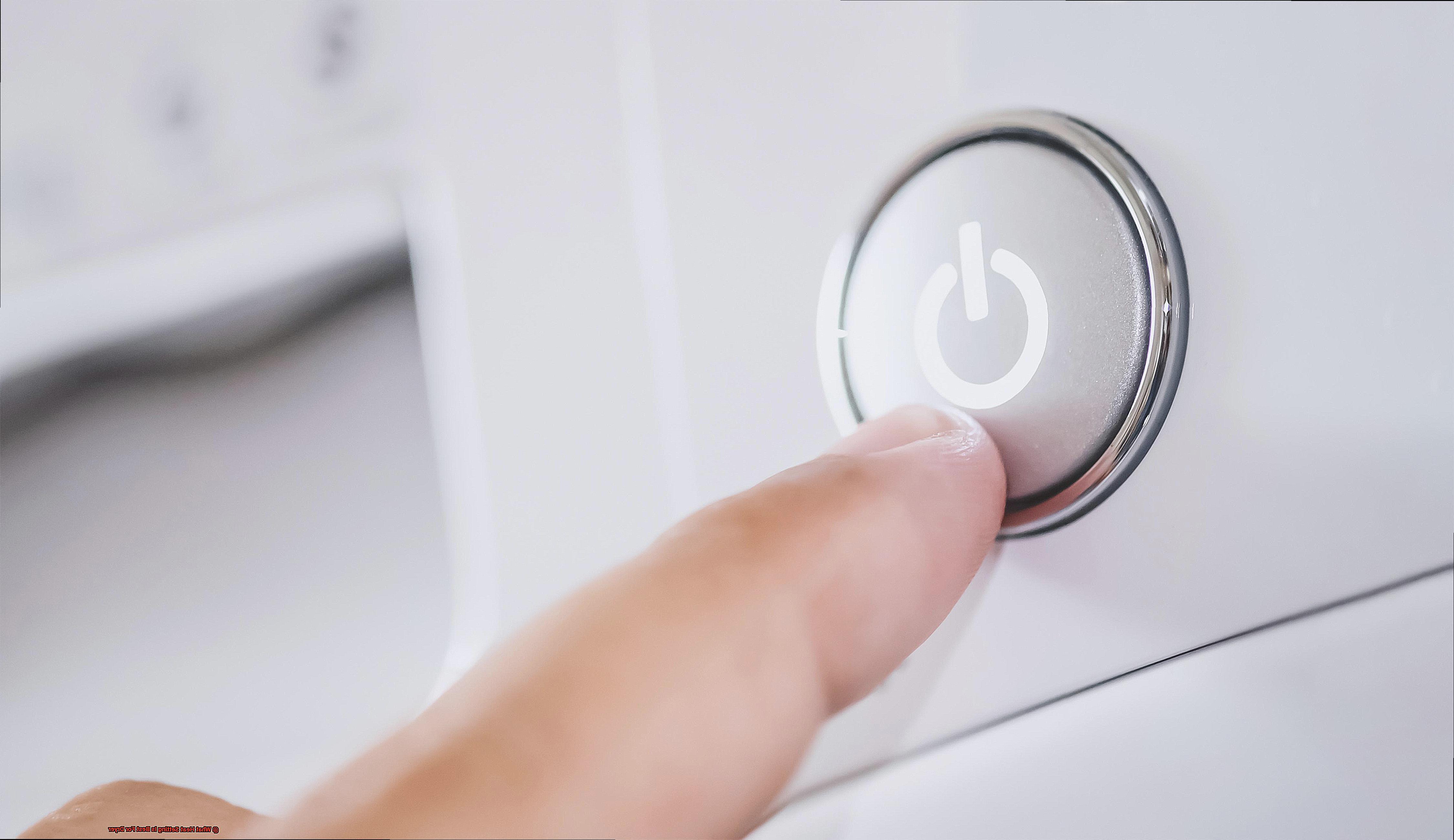
Picture this: you’ve just finished washing a load of laundry, and now it’s time to dry them. But wait. Before you hit that start button on your trusty dryer, have you ever wondered if you’re using the right heat setting for your fabrics? Fear not, my friends. In this article, we’ll dive deep into the world of fabric types and guide you on selecting the appropriate heat setting for each. Let’s get started.
Understanding Fabrics and Their Heat Tolerance:
Delicate and Sensible Souls:
Fabrics like silk, lace, and chiffon are delicate darlings that require extra TLC. To prevent any potential damage or misshaping, opt for a low heat setting or even better, air-drying. Wrinkles be gone.
Synthetic Wonders:
Polyester and nylon, these synthetic wonders can handle slightly higher heat settings. However, to be on the safe side, stick to low or medium heat settings to avoid any unwanted surprises.
Natural Fibers:
Cotton and linen, nature’s gift to us, are more heat-resistant than their delicate counterparts. While they can tolerate higher heat settings, it’s best to play it safe with a medium heat setting to prevent shrinkage.
Handle With Care:
Wool and cashmere, oh so luxurious. These fabrics are highly prone to shrinkage, so let’s treat them with the utmost care. Opt for the lowest heat setting or use the delicate cycle. Better yet, consider air-drying them for that extra touch of love.
Tips and Tricks:
- Read the Labels: Always check those care instructions on your garments. They hold the key to selecting the appropriate heat setting.
- Separate with Love: To avoid any cross-contamination or damage caused by differing drying requirements, separate your laundry based on fabric type. Your clothes will thank you later.
- When in Doubt, Go Lower: If you’re unsure about the perfect heat setting for a particular fabric, start with a lower temperature. You can always increase it later if needed.
- Embrace the Lint Trap Love: Regularly clean your dryer’s lint trap to maintain efficiency and prevent potential fire hazards. Clogged lint traps can lead to longer drying times and increased risk of overheating.
- Invest in Smart Dryers: Consider upgrading to a quality dryer that offers adjustable heat settings and advanced features like moisture sensors. These gems can automatically adjust drying time and temperature based on the moisture level in the load.
Timing the Drying Process to Avoid Over-drying
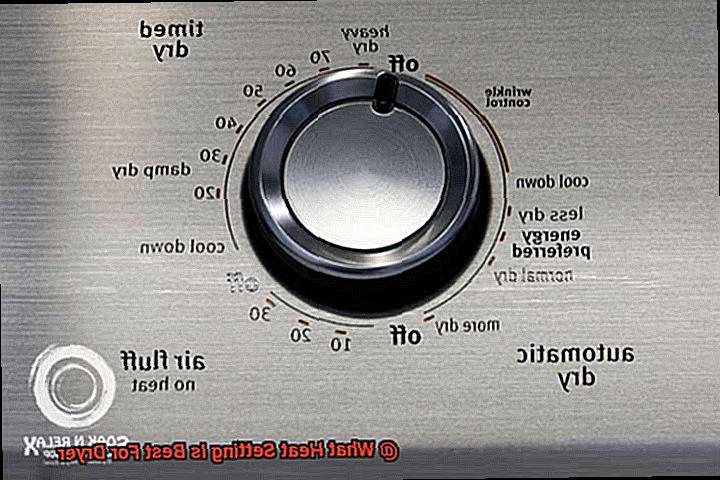
When it comes to drying your clothes, timing is everything. Over-drying can lead to shrinkage, fading, and damage to the fabric. But fear not. With a little know-how, you can avoid these pitfalls and keep your clothes looking their best. Here are some tips on how to time the drying process to avoid over-drying:
- Start with a lower heat setting: Different fabrics have different drying times and requirements. To play it safe, start with a lower heat setting and gradually increase if necessary. This allows for better control over the drying process and minimizes the risk of over-drying.
- Know your heat settings: The heat setting you choose depends on the type of fabric you’re drying. Delicate fabrics like silk, wool, and certain synthetic materials require a low heat setting to prevent damage and ensure that the clothes retain their shape and texture. Everyday fabrics like cotton, linen, and polyester can withstand a medium heat setting without being damaged or over-dried. Heavy-duty fabrics like towels, jeans, and bedding may require a high heat setting to dry completely.
- Use the moisture sensor or timer: Many dryers come equipped with a moisture sensor or timer that gauges the moisture level in the clothes and stops the drying process when they are dry enough. This prevents over-drying and saves energy. Make sure to use this feature and adjust the drying time accordingly.
- Check on your clothes regularly: It’s important to check on your clothes during the drying process to assess their dryness level. If they’re already dry but the timer hasn’t gone off yet, you can stop the dryer early to avoid over-drying.
- Follow care instructions: Always refer to the care instructions on your clothing labels. They provide specific guidelines on recommended heat settings and drying methods for each garment.
Additional Features of Dryers That Can Help Save Energy
Doing laundry can be a tedious task, but with the right dryer features, you can make it easier on yourself and save energy at the same time. Let’s take a look at some additional features of dryers that can help you save energy and get your clothes dried efficiently.
- Moisture Sensor Technology: Say goodbye to over-drying your clothes. Many modern dryers now come with advanced moisture sensors that can detect the level of moisture in your clothes. This means that the dryer will automatically adjust the drying time based on the actual moisture content, preventing unnecessary energy usage. No more wasting energy and damaging your clothes by drying them for longer than needed.
- Eco-Mode: If you have delicate fabrics or items that don’t require intense heat to dry effectively, then eco-mode is for you. This feature reduces the heat level and extends the drying time, ensuring that your clothes are dried gently while using less energy. It’s a win-win situation – you save energy and your delicate items are treated with care.
- Cool-Down Feature: Wrinkles and static electricity can be a real pain, but some dryers have a cool-down feature at the end of the drying cycle to tackle this problem. By introducing a brief period of cool air, this feature helps prevent wrinkles and reduce static electricity in your clothes. Plus, it saves energy by allowing your clothes to cool down gradually, reducing the need for extra drying time.
- Steam Function: Ironing can be a time-consuming chore, but with a dryer that has a steam function, you can say goodbye to wrinkles without even picking up an iron. The steam function uses hot steam to refresh and de-wrinkle your clothes, saving you both time and energy. It’s perfect for those lightly soiled garments or items that have been packed away for some time.
- Delay Start Feature: Are you on a time-of-use utility rate? Then the delay start feature will be your new best friend. This feature allows you to schedule the drying cycle to start at a later time, taking advantage of lower energy rates during off-peak hours. Not only will you save money on your energy bills, but you’ll also be able to plan your laundry around your busy schedule.
- Moisture Extraction System: Last but not least, some dryers come with a moisture extraction system, also known as a heat pump. This technology extracts moisture from the air inside the dryer and reuses it for the drying process, resulting in significant energy savings compared to conventional models.
Conclusion
In conclusion, selecting the appropriate heat setting for your dryer is crucial to ensure the longevity and quality of your clothes.
By using a low or medium heat setting, you can protect delicate fabrics from potential damage and prevent shrinkage. On the other hand, if you’re dealing with heavy fabrics or stubborn stains, opting for a high heat setting can help achieve faster drying times.
Ultimately, finding the right balance between efficiency and garment care will result in optimal drying results.









